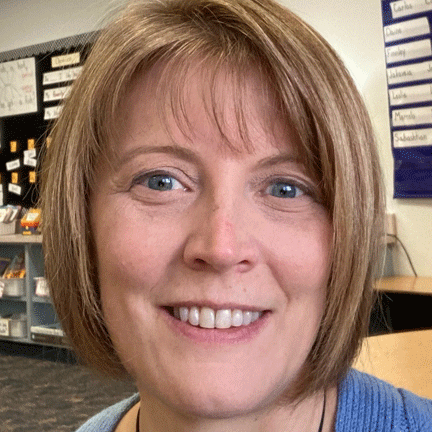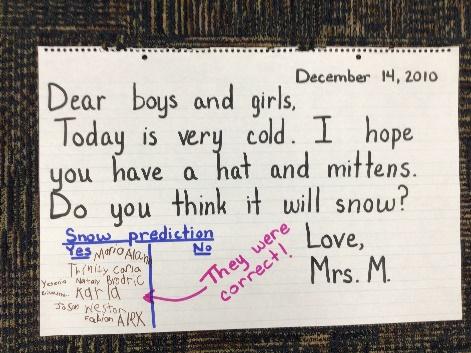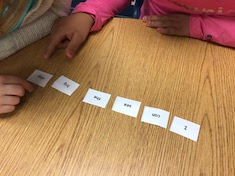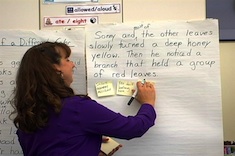There is magic in the old and magic in the new. The trick is to successfully combine the two.
—Adrienne Posey
“There is magic in the old…” That’s why I hold on to morning message routines in my primary grade classroom; I know it’s good for kids in many ways. It’s also why I’ve continued to change and add to the ways I use morning messages in my classroom. Over the past couple of years, I’ve (somewhat reluctantly at first) put more effort into using the structured phonics program our district adopted. While I don’t like everything about it, I have come to appreciate the way it’s helped our K–2 teachers provide a more organized, consistent learning experience for kids and how it’s helped teachers become better at showing learners how and why sounds and words work the way they do. Using the morning message as an authentic way to notice and use and wonder about the things we are learning during phonics lessons has helped me find authenticity in learning about words, and I can use the required curriculum and morning messages.
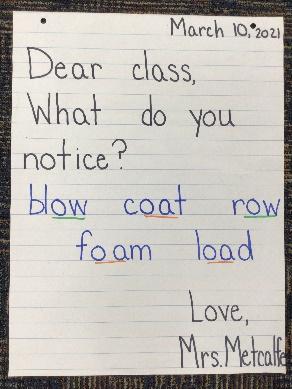
My Schedule Is Tight—Where Might It Fit?
“I wish I had time for that,” said a teacher friend, gesturing at the morning message on my easel. “The days feel so tight with all we have to fit in, and I felt like I had to let it go.” Since we’re in the same district, I know the expectations for instructional minutes using our curriculum materials are the same.
“It wasn’t easy,” I replied, “but I thought it was important, and I only needed 5-10 minutes.”
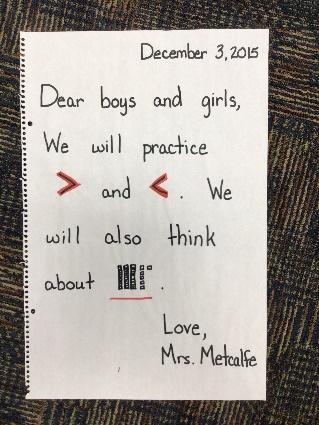
New curriculum expectations for using it had squeezed the schedule, making it tough to hold on to routines I’d been using for years, including the morning message. I acknowledged the new stuff had a place and a purpose, but also knew that the old routine was a powerful context for learning. To make it all fit, I had to look for overlap and opportunity.
“I do start a little earlier—instead of waiting until after the school-wide announcements, I go ahead and start. Sometimes we have to pause to listen, and sometimes there are still a couple of kids trickling in from breakfast, but it’s working better than I thought.” That had been a hard change for me. I’d worried we’d lose the flow or that kids coming in a bit late would have a hard time joining in. I shouldn’t have. The kids surprised me with how quickly they figured out on their own to slip into the room, join us on the carpet, and become fully engaged. I had almost let fear make me overlook a precious five minutes of time we could use.
My friend nodded. “I could totally make that work. I was afraid of the same thing, and I never thought to just give it a try.”
“Sometimes I ‘borrow’ five minutes from reading time,” I continued, “since what we’re doing is applying the stuff we’re learning in reading lessons.”
I also admitted that I needed to use time a little more efficiently. I was used to drawing kids’ attention to what I had planned and letting the conversation meander. I needed to pick a focus for each day’s routine. While acknowledging other things students noticed, there wasn’t a need to follow up on them—noticing was enough. If it was something I wanted to go deeper with, we’d jot it on a sticky note and pop it onto the message as a reminder that we’d come back to it the next day. And as one student noted, “Since you can tell time, you have to tell us when to stop.”
Things to Consider
- Try to gain minutes by tightening transitions. Teaching and practicing consistent routines shaves precious minutes from things like bathroom breaks and getting ready to go home.
- Tighten up your morning message routine. It can be done in five minutes.
- Consider how teaching and learning during morning message overlaps with content learning and activities. The five minutes of application during a lesson could happen during morning message time.
- Remember that if you take a couple of minutes at the beginning of a lesson for a morning message, the message might help support learning from the day before or could set the stage for that day’s learning.
- Ask others to help you brainstorm. It was one of my teammates who gave me the courage to start morning message before announcements each day.
Crafting the Morning Message—An Intentional Act
In 2010, I wrote a blog post about watching another teacher rock the morning message in her room. Mrs. S. helped me think about possibilities beyond phonics learning and classroom community building, and my practice has been evolving ever since. Back then I wrote this:
What she does with a morning message is some of the most deliberate, engaging, powerful kind of teaching I have had the pleasure of observing.
The key to morning messages that engage students in powerful learning begins with intentionality in crafting the message. Messages should be accessible and engaging for the learners in your room. Ideally students will be able to read most or all of the message with very little support. Think about how you might have students interact with the message. Will they turn and talk to answer a question? Annotate phonics patterns? Circle sentences?
Things to Consider
- Whether projecting a message digitally or using chart paper and markers, keep it visually clean. Use dark-color print on a white (or very pale) background. Use other colors sparingly to highlight or when engaging students in annotating.
- Consider sentence length and complexity. Think about the kinds of text the majority of your students can read with minimal support, and aim to be at that level or a little below.
- Try thinking about a couple of current high-frequency words and one phonics pattern students are learning. Challenge yourself to write the message using them.
- Create opportunities for questions to emerge. Use new content vocabulary or tease a new book.
- Link to current learning and events.
- Mix it up. Change the format or content. Some days might be information; others may pose questions or challenges.
It’s not always easy to hold on to effective instructional routines and find ways to embrace new initiatives and mandates. Time is often the first challenge, followed by creating something that allows for the overlap needed to make it work. My friend left my room that day with a determined look. “I’m not sure how it will play out,” she called over her shoulder, “but it’s worth a try!”


